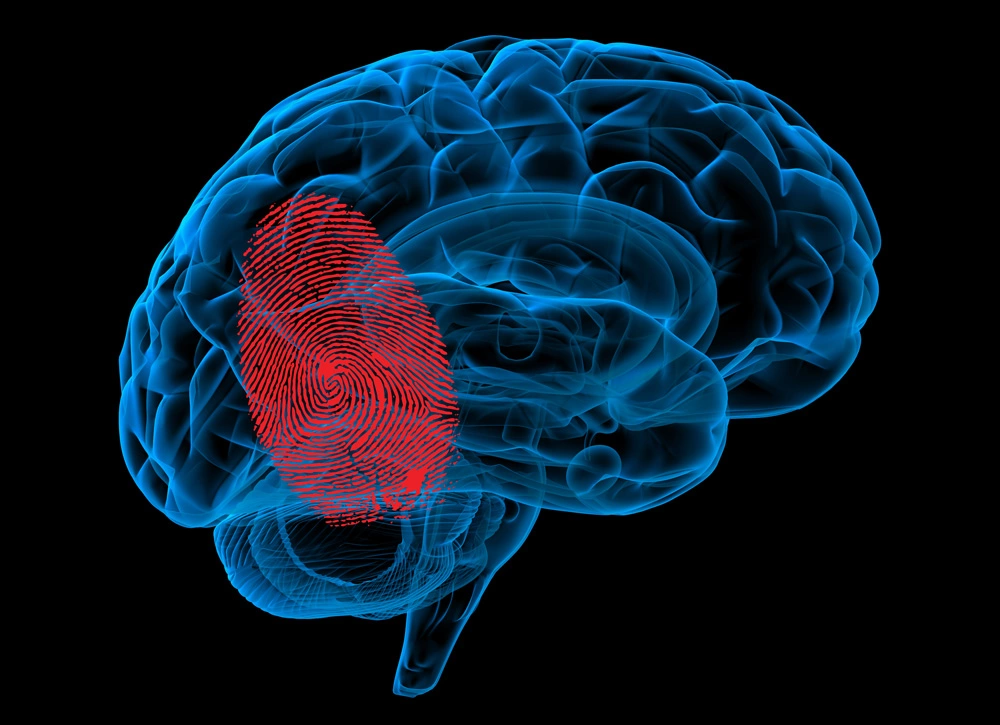Chronic pain is pain that progresses from an acute to a chronic state even after the healing...
Read MoreChronic Abdominal Pain | Causes, Symptoms and Treatments
Introduction
Chronic abdominal pain (CAP) is one of the most common complaints seen in primary-care clinics, subspecialty, and gastroenterology clinics.
The diagnosis and management of chronic abdominal pain is often a difficult due to its wide causes and poor sensitivity of history and physical examination of the patients.
According to the International Association for the Study of Pain (IASP), pain is “an unpleasant sensory and emotional experience associated with, or resembling that associated with, actual or potential tissue damage”
Chronic abdominal pain is defined as pain that lasts more than three months.
It may be linked to a number of abdominal diseases or extra-abdominal diseases.
The pain can manifest in different locations, with different intensities and propagation, and it is often coexisting with other symptoms.
Causes of Chronic Abdominal Pain
The leading causes of chronic abdominal pain are: –
- Functional gastrointestinal disorders (FGIDs).
- Disorders of gut-brain interaction, such as irritable bowel syndrome (IBS), functional dyspepsia (FD), and centrally mediated abdominal pain syndrome (CAPS).
According to the IASP taxonomy, chronic abdominal pain can be classified into: –
- Abdominal wall pain.
- Abdominal pain of visceral origin.
- Abdominal pain syndromes of generalized diseases.
- FGIDs.
The following table illustrate more details about possible causes of chronic abdominal pain: –
1. Abdominal wall pain
- Herpes zoster.
- Postherpetic neuralgia.
- Segmental or intercostal neuralgia.
- Twelfth rib syndrome.
- Abdominal cutaneous nerve entrapment syndrome.
2. Abdominal pain of visceral origin
- Cardiac failure.
- Peptic ulcer disease.
- Gastritis and duodenitis.
- Gastroparesis.
- Carcinoma of the stomach.
- Post-gastric surgery syndrome.
- Carcinoma of the pancreas.
- Crohn’s disease.
- Ulcerative colitis.
- Chronic constipation.
- Diverticular disease.
- Intestinal obstruction.
- Chronic mesenteric ischemia.
- Celiac artery syndrome.
- Abdominal adhesions.
- Colon cancer.
- Radiation enterocolitis.
- Chronic pancreatitis.
- Gallbladder disease.
- Post-cholecystectomy syndrome.
- Carcinoma of the liver or biliary system.
- Carcinoma of the kidney.
- Hernias.
3. Abdominal pain syndromes of generalized diseases
- Familial Mediterranean fever.
- Abdominal migraine.
- Intermittent acute porphyria.
- Hereditary coproporphyria.
- Variegate porphyria.
4. FGIDs or disorders of gut-brain interaction
- Functional dyspepsia (FD).
- Irritable bowel syndrome (IBS).
- Functional abdominal pain syndrome.
- Centrally mediated abdominal pain syndrome (CAPS).
- Narcotic bowel syndrome.
- Gallbladder dyskinesia.
- Sphincter of Oddi dysfunction.
- Levator ani syndrome.
- Proctalgia fugax.
Symptoms of Chronic Abdominal Pain
Chronic abdominal pain is a common nonspecific complaint that can cause pain anywhere from the lower chest to the pelvis.
The quality, description, location, and radiation of pain are all affected by the organ system(s) involved.
In many patients, abdominal pain can be associated with: –
- Constipation or diarrhea.
- Bloating or a sensation of increased abdominal pressure with or without visible distention.
- Heartburn, regurgitation, nausea, and chronic cough may be suggestive of GERD.
- Patients presenting with epigastric pain, melena, or black, tarry stool, is a sign of an upper gastrointestinal bleed and may be a sign of peptic ulcer disease.
- Hematochezia is more common in lower gastrointestinal bleeding and may occur in people who have abdominal pain due to ischemia or inflammation.
- Hepatomegaly, clay-colored stools, scleral icterus and tea-colored urine are all signs of hepatobiliary or pancreatic pathology.
Epidemiology of Chronic Abdominal Pain in US
According to a US review, abdominal pain is the most prevalent gastrointestinal symptom and one of the main reasons for both inpatient and outpatient visits.
According to international cross-sectional data, its prevalence ranges between 22 and 25%, with more women reporting abdominal pain than men (24 vs. 17%).
In the US, 84% of patients with abdominal pain visit their primary care physician first, while almost 40% see a gastroenterologist.
Acute abdominal pain accounts for 10% of primary care visits, whereas subacute or chronic abdominal pain, the most common diagnosis (13% of visits) is IBS.
24 to 35 percent of cases have no definitive diagnosis after seeing a primary care physician.
Diagnosis of Chronic Abdominal Pain
A thorough medical history and comprehensive physical examination are the first steps in the diagnostic evaluation of a patient with chronic abdominal pain.
The history should focus on eliciting the pain description, location, quality, intensity and radiation, as well as exacerbating and alleviating factors.
An in-depth review of systems should be performed to identify concomitant symptoms that may provide indications to the underlying diagnosis.
In order to determine risk factors for specific disorders, the past medical, family, and social histories can be helpful.
Given the chronicity of the pain, the clinician should review prior laboratory and imaging studies as well as previous procedures in understand the work-up to date and, whenever possible, avoid repeating tests.
The physical examination should include a complete abdominal and rectal examination.
When auscultating for bowel sounds, apply gentle pressure to the stethoscope; traditionally, abdominal tenderness lessens in patients with functional bowel disorders when they become distracted, whereas pain may worsen in those with structural bowel disorders.
Here are some diagnostic criteria of leading causes of chronic abdominal pain: –
The diagnosis of FD is made based on typical symptoms and the history of the patient, as well as the exclusion of other diseases of the upper gastrointestinal tract and upper abdominal organs that may present with dyspeptic symptoms.
Diagnosis of FD is also based on abdominal ultrasonography, testing for Helicobacter pylori.
Diagnosis of IBS includes: –
- Clinical history.
- Information about lifestyle and diet.
- Psychological interview.
- The Rome IV diagnostic questionnaire.
- Normal physical examination, and laboratory tests.
- Complete blood count to exclude anemia or leukocytosis.
- C-reactive protein and fecal calprotectin to rule out IBS in patients with diarrhea.
- Fecal occult blood test.
- Thyroid check.
- Serology for celiac disease if clinically suspected.
Treatment of Chronic Abdominal Pain
Antispasmodic medications are frequently used to treat the symptoms of abdominal pain.
Antispasmodic treatment comprises a wide variety of therapeutic classes with different mechanisms of action, such as: –
- Anticholinergic/antimuscarinic agents (inhibition of GI smooth muscle contraction).
- Calcium channel inhibitors (inhibition of calcium transport into GI smooth muscle).
- Direct smooth muscle relaxants (inhibition of sodium and calcium transport).
The finding of an underlying cause will also influence how chronic abdominal pain is treated.
Standard medical management should be used to treat any identified causes.
For instance, a gluten-free diet should be implemented if a patient is diagnosed with celiac disease.
In the same way, if a patient is found to have H. pylori infection, he should receive the proper therapy and testing should be performed to confirm eradication.
Cholecystectomy is typically beneficial for people with gallstone-related complications or classic biliary colic.
For patients suffering from abdominal wall pain, a trigger point injection may provide effective pain relief.
Summary
Chronic abdominal pain (CAP) is one of the most common complaints seen in primary-care clinics, subspecialty, and gastroenterology clinics.
The diagnosis and management of chronic abdominal pain is often a difficult due to its wide causes and poor sensitivity of history and physical examination of the patients.
Chronic abdominal pain is defined as pain that lasts more than three months.
The leading causes of chronic abdominal pain are: –
- Functional gastrointestinal disorders (FGIDs).
- Disorders of gut-brain interaction, such as irritable bowel syndrome (IBS), functional dyspepsia (FD), and centrally mediated abdominal pain syndrome (CAPS).
In many patients, abdominal pain can be associated with: –
- Constipation or diarrhea.
- Bloating or a sensation of increased abdominal pressure with or without visible distention.
- Heartburn, regurgitation, nausea, and chronic cough may be suggestive of GERD.
- Patients presenting with epigastric pain, melena, or black, tarry stool, is a sign of an upper gastrointestinal bleed and may be a sign of peptic ulcer disease.
- Hematochezia is more common in lower gastrointestinal bleeding and may occur in people who have abdominal pain due to ischemia or inflammation.
- Hepatomegaly, clay-colored stools, scleral icterus and tea-colored urine are all signs of hepatobiliary or pancreatic pathology.
A thorough medical history and comprehensive physical examination are the first steps in the diagnostic evaluation of a patient with chronic abdominal pain.
The history should focus on eliciting the pain description, location, quality, intensity and radiation, as well as exacerbating and alleviating factors.
An in-depth review of systems should be performed to identify concomitant symptoms that may provide indications to the underlying diagnosis.
Antispasmodic medications are frequently used to treat the symptoms of abdominal pain.
Antispasmodic treatment comprises a wide variety of therapeutic classes with different mechanisms of action.
The finding of an underlying cause will also influence how chronic abdominal pain is treated.
Standard medical management should be used to treat any identified causes.
How useful was this post?
Click on a star to rate it!
Average rating 0 / 5. Vote count: 0
No votes so far! Be the first to rate this post.
I'm sorry that this post was not useful for you!
Let me improve this post!
Tell me how I can improve this post?
References
- Lukic S;Mijac D;Filipovic B;Sokic-Milutinovic A;Tomasevic R;Krstic M;Milosavljevic T;. Chronic abdominal pain: Gastroenterologist approach. Digestive diseases (Basel, Switzerland). Retrieved December 6, 2022, from PubMed
- DL;, S. C. M. G. S. D. Chronic abdominal pain in general practice. Digestive diseases (Basel, Switzerland). Retrieved December 6, 2022, from PubMed
- Brenner, D. M., & Lacy, B. E. (2021, August 1). Antispasmodics for chronic abdominal pain: Analysis of North American Treatment Options. The American journal of gastroenterology. Retrieved December 6, 2022, from PubMed
- A diagnostic approach to chronic abdominal pain: A clinical casebook. Retrieved December 6, 2022, from ResearchGate
Recent Posts
-
SAPHO Syndrome | Causes, Symptoms, Diagnosis & Treatments
-
Systemic Lupus Erythematosus | Causes, Symptoms & Treatments
-
Gastric Ulcers | Causes, Symptoms, Complications & Treatments
-
Wiskott-Aldrich Syndrome | Causes, Symptoms & Treatments
-
The 4 Stages of HIV Infection | Ultimate Guide
-
Good’s Syndrome | Symptoms, Causes & Treatments
-
Acquired Angioedema | Causes, Symptoms & Treatments
-
Rheumatoid Arthritis | Symptoms, Causes, Diagnosis & Treatments
-
Acute Pancreatitis | Causes, Symptoms, Diagnosis and Treatments
-
Pernicious Anemia | Causes, Symptoms, Diagnosis and Treatments
-
Sickle Cell Anemia | Causes, Symptoms, Diagnosis and Treatments
-
Aplastic Anemia | Causes, Symptoms, Diagnosis and Treatments
-
Diamond Blackfan Anemia | Causes, Diagnosis and Treatments
-
Sideroblastic Anemia | Causes, Symptoms & Treatments
-
Organic Dust Toxic Syndrome (ODTS) | Symptoms, and Treatments




